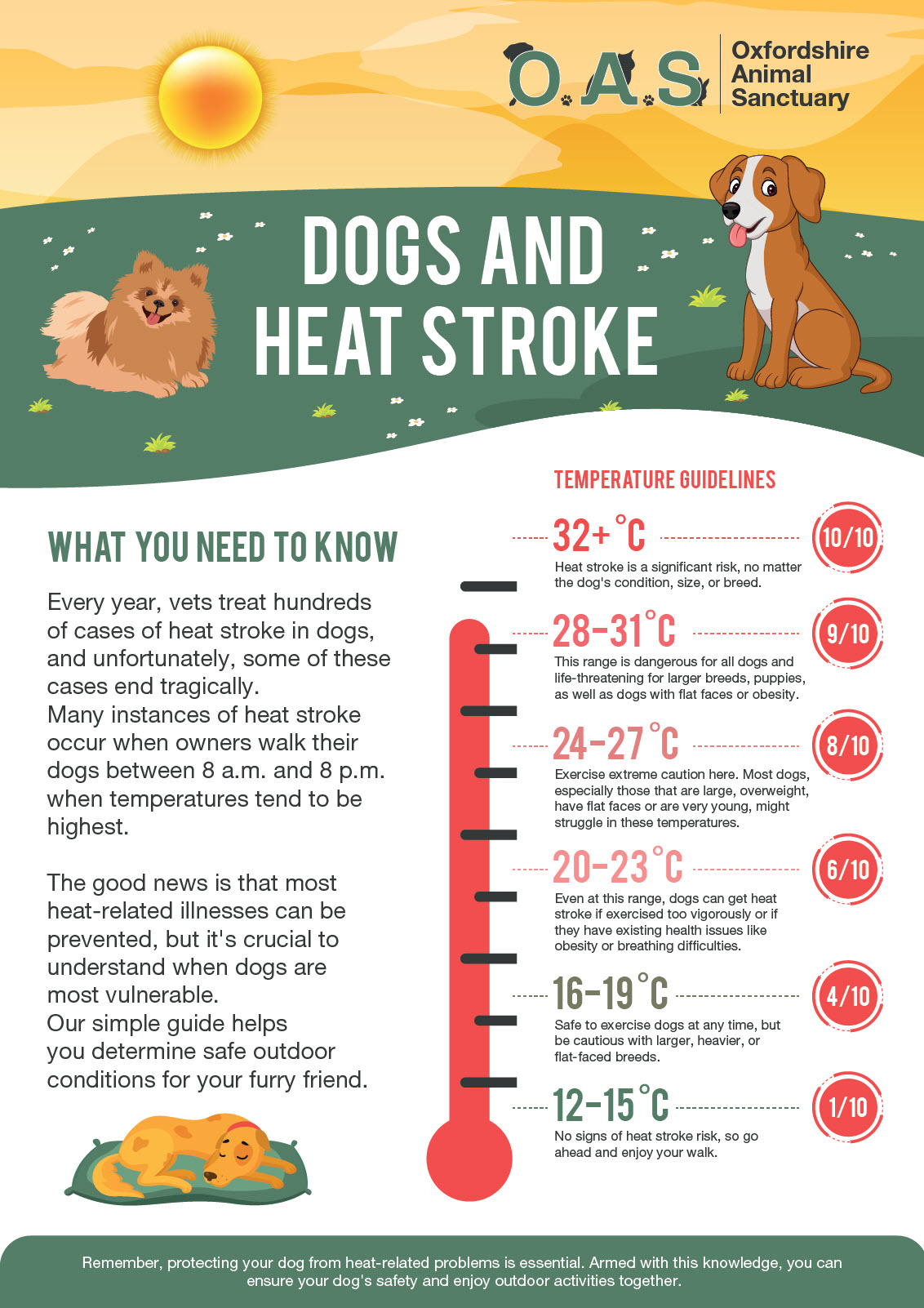Every year, vets treat hundreds of cases of heat stroke in dogs, and unfortunately, some of these cases end tragically. Many instances arise when owners walk their dogs between 8 a.m. and 8 p.m., a time when temperatures tend to be highest.
The good news is that most heat-related illnesses can be prevented, but it’s crucial to understand when dogs are most vulnerable. Our simple guide helps you determine safe outdoor conditions for your furry friend.
Warning Signs
Dog owners must be familiar with the 7 warning signs of heat stroke, so immediate action can be taken should a situation arise.
The quicker the response, the higher the chances of full recovery.
Symptoms include:
- Heavy Panting: While dogs naturally pant, excessive panting or difficulty breathing can be an early sign of heat stress.
- Increased Heart Rate: A racing or irregular heartbeat is an indication that the dog’s body is struggling to cool down.
- Drooling: Excessive drooling or thick, sticky saliva can be indicative of dehydration and overheating.
- Lethargy: If your dog seems unusually tired, weak, or uncoordinated, they may be experiencing early signs of heat stroke.
- Vomiting or Diarrhea: These might have traces of blood and can be caused due to overheating.
- Reddened Gums: This indicates an increase in the internal body temperature.
- Collapse: In extreme cases, the dog might collapse or even lose consciousness.
If you notice any of these symptoms, it’s crucial to act swiftly. Move the dog to a cooler environment immediately, provide them with fresh water, and drench them with cool (but not cold) water. Consult a veterinarian right away. Even if the symptoms seem to improve, underlying damage might still be present.
Temperature Guidelines
Here’s where a handy general guide comes into play, helping us understand the ideal conditions for our dogs’ outdoor ventures:
- 32°C and above: Heat stroke is a significant risk, no matter the dog’s condition, size, or breed.
- 28-31°C: This range is dangerous for all dogs and life-threatening for larger breeds, puppies, as well as dogs with flat faces or obesity.
- 24-27°C: Exercise extreme caution here. Most dogs, especially those that are large, overweight, have flat faces, or are very young, might struggle in these temperatures.
- 20-23°C: Even at this range, dogs can get heat stroke if exercised too vigorously or if they have existing health issues like obesity or breathing difficulties.
- 16-19°C: Safe to exercise dogs at any time, but be cautious with larger, heavier, or flat-faced breeds.
- 12-15°C: No signs of heat stroke risk, so go ahead and enjoy your walk.
Remember, protecting your dog from heat-related problems is essential. Armed with this knowledge, you can ensure your dog’s safety and enjoy outdoor activities together.
How the Environment Contributes
Heat stroke in dogs doesn’t always stem from direct sun exposure. The environment plays a significant role in influencing their temperature:
- Hot Surfaces: Asphalt, sand, and concrete can get scorching during the summer, potentially burning a dog’s sensitive paw pads and increasing their overall body temperature.
- High Humidity: Humidity can hinder a dog’s ability to cool down through panting. Even on an overcast day, high humidity can escalate the risk of heat stroke.
- Limited Ventilation: Keeping a dog in a confined space like a car, even with windows slightly open, can be deadly. The temperature inside a parked car can rise rapidly, reaching lethal levels in mere minutes.
Ensuring our dogs’ safety during the sweltering months demands awareness, preparation, and prompt action. With this comprehensive guide, dog owners can equip themselves to safeguard their beloved pets from the perils of heat stroke.
Remember, prevention is always better than cure, and the well-being of our furry friends is always worth the extra effort.
Here’s our handy PDF poster to help remind you of the dangers of heatstroke and the temperature guide.


